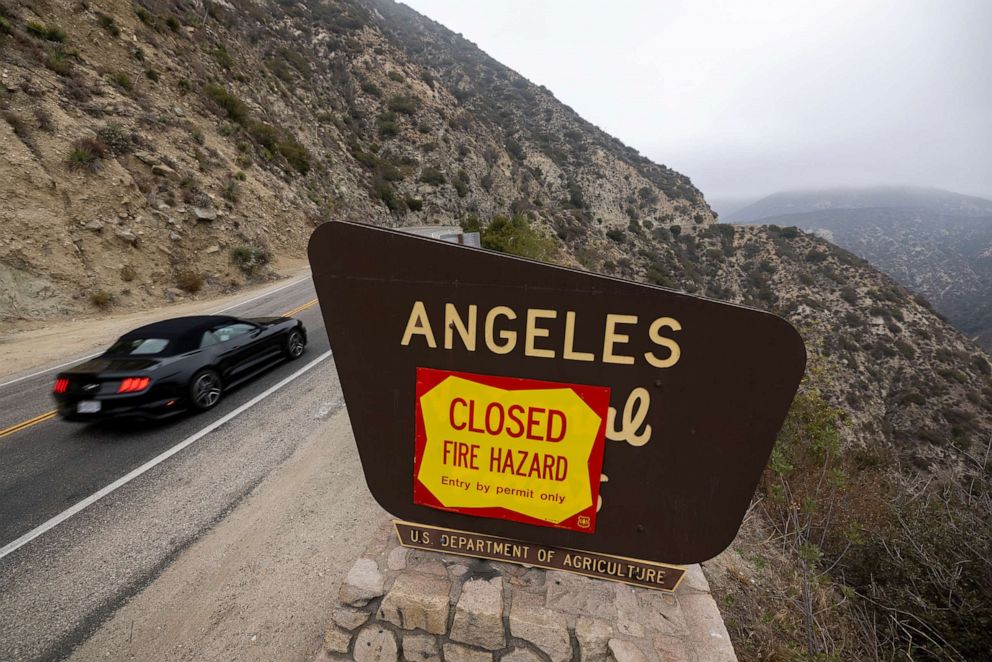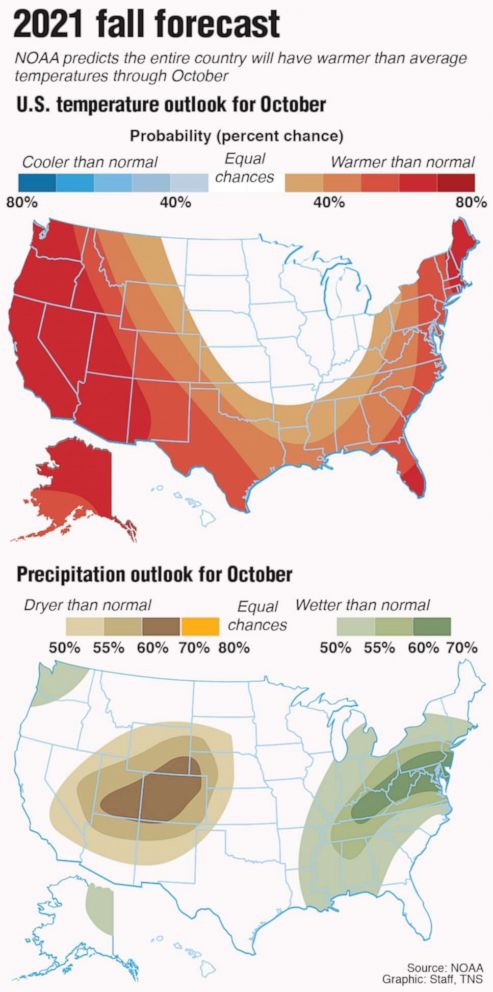The need for water in the West will continue unless emissions are curbed.
By Daniel Manzo
September 30, 2021, 6:04 AM ET

Megadrought in Southwest raises concerns over water levelsThe U.S. Southwest is grappling with a decades-long megadrought exacerbated by global warming.John Locher/AP
The thirst for water in the Western U.S. will likely not be quenched in the near future.
Drought conditions are expected to persist in the West, which is already amid a decades-long megadrought, through 2022 and beyond, according to the National Oceanic and Atmospheric Administration's drought outlook.
MORE: How will the West solve a water crisis if climate change continues to get worse?
The drought will remain the worst from California to the Northern Plains, according to the report.

A car passes forest closure signage along the Angeles Crest Highway in the Angeles National Forest which, along with all national forests in California, is closed due to dangerous wildfire conditions, Sept. 2, 2021 near La Canada Flintridge, Calif. The western U.S. is experiencing wildfires of unprecedented size and destruction along with record drought.David McNew/Getty Images
Precipitation totals in the Southwest over the 20 months from January 2020 and August 2021 are the lowest on record since at least 1895, according to the report. The 2021 to 2022 winter season is forecast to be drier than average.
MORE: Why water levels in megadrought-impacted Southwestern states have some experts concerned
The megadrought that's plaguing much of the West is a direct consequence of climate change, experts have told ABC News.
The new NOAA report did not outright blame warming temperatures across the globe for the regional drought, but stated the drought is occurring due to "successive seasons of below average precipitation that appear to have come from natural, but unfavorable, variables in the atmosphere."

Tribune News Service via Newscom
NOAA scientists did concede that continued greenhouse gas emissions will exacerbate drought conditions in the Southwest and that "increasing atmospheric demand for water" will only end if human-caused greenhouse gas emissions are reduced.
MORE: 'Megadrought' in West directly linked to climate change, experts say
"Continued warming of the U.S Southwest due to greenhouse gas emissions will make even randomly occurring seasons of average- to below-average precipitation a potential drought trigger and intensify droughts beyond what would be expected from rainfall or snowpack deficits alone," the report stated.

A buoy rests on the ground at a closed boat ramp on Lake Mead, Aug. 13, 2021, at the Lake Mead National Recreation Area near Boulder City, Nev.John Locher/AP
La Nina is expected to develop in the coming months will bring some relief to the drought in the Pacific Northwest, NOAA's Climate Prediction Center has announced.
SLIDESHOW: Extreme Weather Photos 2021
While the impacts from La Nina can vary and be hard to predict, it typically brings drier than average conditions across the southern U.S., including parts of the Southwest, and above average rain conditions in the Pacific Northwest, especially along the coast, which could help to alleviate drought conditions there.
ABC News' Julia Jacobo contributed to this report.
La Nina is expected to develop in the coming months will bring some relief to the drought in the Pacific Northwest, NOAA's Climate Prediction Center has announced.
SLIDESHOW: Extreme Weather Photos 2021
While the impacts from La Nina can vary and be hard to predict, it typically brings drier than average conditions across the southern U.S., including parts of the Southwest, and above average rain conditions in the Pacific Northwest, especially along the coast, which could help to alleviate drought conditions there.
ABC News' Julia Jacobo contributed to this report.
No comments:
Post a Comment